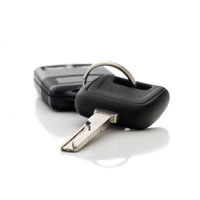6 Ways to Save on Car Insurance in Charleston, WV

Cutting costs on Charleston car insurance can be challenging for people who are new to shopping for insurance online. Drivers have so many choices that it can quickly become a ton of work to find lower rates in Charleston.
Compare the Market for Car Insurance in Charleston, WV
Lowering your car insurance rates is surprisingly easy. You just need to spend a few minutes to compare quotes online from several insurance companies. It is quite easy and can be accomplished using a couple different methods.
- The single most time-saving way to find low rates would be an industry-wide quote request form like this one (opens in new window). This easy form keeps you from doing separate forms for every car insurance company. One simple form will get you price quotes from car insurance companies with the best prices. This is perfect if you don’t have a lot of time.
- A slightly less efficient method to find lower rates is to manually visit each company’s website to complete their respective quote request forms. For examples sake, let’s say you want to compare rates from GEICO, 21st Century and State Farm. To find out each rate you need to take the time to go to each site and enter your policy data, which is why most consumers use the first method.
For a list of links to insurance companies in Charleston, click here.
It doesn’t matter which method you choose, just ensure you are comparing identical coverage limits for every company. If you use different liability limits you will not be able to truly determine the lowest rate in Charleston.
The car insurance bait and switch
Consumers constantly see and hear ads that promise big savings from the likes of Allstate, GEICO and Progressive. They all seem to make an identical promise about savings after switching your coverage to them.
How do they all make the same claim? This is how they do it.
All the different companies have a preferred profile for the type of driver that is profitable for them. For instance, a profitable customer could be over the age of 40, a clean driving record, and drives newer vehicles. A propective insured who meets those qualifications will get the preferred rates and as a result will probably save when they switch companies.
Potential insureds who don’t qualify for the requirements must pay higher rates and ends up with the customer not buying. Company advertisements say “drivers who switch” but not “drivers who get quotes” save that much. That’s why companies can advertise the way they do. This illustrates why drivers must get as many quotes as possible. You cannot predict which insurance companies will provide you with the cheapest rates.
Verify you’re getting all your discounts
Companies that sell car insurance don’t always publicize all their discounts in an easy-to-find place, so we took the time to find both the well known and the harder-to-find ways to save on car insurance. If they aren’t giving you every credit you qualify for, you are paying more than you should be.
- Memberships – Participating in a professional or civic organization could qualify you for a break when shopping for car insurance.
- Life Insurance Discount – Companies who offer life insurance give a break if you buy life insurance from them.
- Government Employees – Being employed by or retired from a federal job may qualify you for a discount depending on your company.
- Anti-theft System – Anti-theft and alarm systems help deter theft and will save you 10% or more.
- Defensive Driving Course – Completing a defensive driving course could save 5% or more if you qualify.
- Drivers Education – Make teen driver coverage more affordable by requiring them to successfully complete driver’s ed class if it’s offered in school.
Consumers should know that most credits do not apply to your bottom line cost. Most only reduce individual premiums such as liability and collision coverage. So even though they make it sound like all the discounts add up to a free policy, companies wouldn’t make money that way.
Additional detailed information is located at the West Virginia Insurance Commission website. West Virginia drivers can read state legal mandates and laws, view agent and company licensing information, learn about specific coverages, and report car insurance fraud.
Car insurance coverages
Learning about specific coverages of car insurance can be of help when determining which coverages you need and proper limits and deductibles. The coverage terms in a policy can be ambiguous and coverage can change by endorsement.
Liability auto insurance – Liability coverage can cover damage or injury you incur to a person or their property that is your fault. Coverage consists of three different limits, per person bodily injury, per accident bodily injury, and a property damage limit. Your policy might show policy limits of 25/50/25 that means you have $25,000 in coverage for each person’s injuries, a per accident bodily injury limit of $50,000, and a limit of $25,000 paid for damaged property.
Liability coverage protects against claims like emergency aid, court costs and medical services. How much coverage you buy is up to you, but you should buy as high a limit as you can afford. West Virginia requires minimum liability limits of 20,000/40,000/10,000 but you should consider buying more liability than the minimum.
Comprehensive insurance – This coverage pays for damage OTHER than collision with another vehicle or object. You need to pay your deductible first and the remainder of the damage will be paid by comprehensive coverage.
Comprehensive coverage protects against claims such as hail damage, damage from a tornado or hurricane and hitting a bird. The maximum amount you can receive from a comprehensive claim is the actual cash value, so if the vehicle is not worth much it’s not worth carrying full coverage.
Uninsured/Underinsured Motorist (UM/UIM) – Uninsured or Underinsured Motorist coverage protects you and your vehicle from other motorists when they either have no liability insurance or not enough. Covered claims include injuries to you and your family and also any damage incurred to your vehicle.
Since a lot of drivers have only the minimum liability required by law (which is 20/40/10), it doesn’t take a major accident to exceed their coverage limits. That’s why carrying high Uninsured/Underinsured Motorist coverage is very important.
Collision – This coverage will pay to fix damage to your vehicle resulting from a collision with another vehicle or an object, but not an animal. You first must pay a deductible and the rest of the damage will be paid by collision coverage.
Collision can pay for claims like rolling your car, sustaining damage from a pot hole and hitting a mailbox. Paying for collision coverage can be pricey, so you might think about dropping it from vehicles that are older. It’s also possible to choose a higher deductible to get cheaper collision coverage.
Med pay and Personal Injury Protection (PIP) – Med pay and PIP coverage reimburse you for short-term medical expenses for things like pain medications, chiropractic care, nursing services and prosthetic devices. The coverages can be used to fill the gap from your health insurance policy or if there is no health insurance coverage. Medical payments and PIP cover you and your occupants in addition to if you are hit as a while walking down the street. Personal injury protection coverage is not available in all states but can be used in place of medical payments coverage
Best coverage at the best price
Consumers leave their current company for a number of reasons such as unfair underwriting practices, policy cancellation, delays in paying claims and even denial of a claim. Regardless of your reason, finding a new company is not as hard as you think.
In this article, we covered a lot of ways to compare car insurance prices online. It’s most important to understand that the more rate comparisons you have, the higher the chance of saving money. You may even discover the lowest priced car insurance comes from a small mutual company.
When shopping online for car insurance, never skimp on critical coverages to save a buck or two. There have been many situations where someone dropped full coverage only to find out that the small savings ended up costing them much more. The ultimate goal is to purchase a proper amount of coverage at a price you can afford, not the least amount of coverage.

